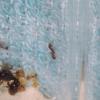Hey everyone. Chris from Long Island NY here. Quick questions about pheidole morrisii ants. I've searched a lot of different places, and can't find the answers to these specific questions:
1: How many years will the queen ant live?
2: How big is an average colony, and how big can the colony get given the most opportune environment and care?
3: Does this species of ant have a common name?
I caught a very beautiful queen shortly after a nuptial flight (I'm assuming) here on long Island. I say shortly after a nuptial flight because she only had one wing. She had already broken off the other.
If anyone has seen my other posts, I'm always posting for ID's in the ant ID section. I'm still very green to the hobby of ant keeping. So I'm always looking to learn. It has become a hobby I am obsessed with. I currently have over 20 queens, 90% of which have eggs, and a few that have had the first set of nanitics arrive, including a camponotus chromaiodes, and a tetramorium immigrans. And a formica species (forgot the specific species) that is due to hatch out the first set of workers any day now. I could spend hours watching the ants. I try not to since they don't like the light, but sometimes I'll sit there at night for over an hour with a red light to watch them. It's Facinating to me. I look forward to learning more, and watching these colonies grow to their full potential.
Thanks in advance for any and all info on this species.
- Formiculture.com
- Forums
- Gallery
- Members
- Member Map
- Chat















